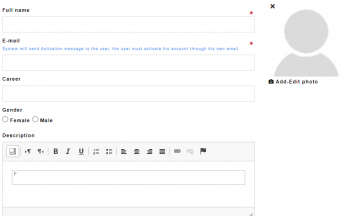Engaging STEM Activities for Kids: Simple Projects to Spark Curiosity

Engaging STEM Activities for Kids: Simple Projects to Spark Curiosity
What if you could turn everyday household items into exciting learning tools for your child? Why is STEM education so crucial in early development, and how can you make it fun and accessible? STEM (Science, Technology, Engineering, and Math) activities don't have to be complicated or expensive. With a little creativity, you can nurture your child's curiosity and problem-solving skills through hands-on projects that feel more like play than learning.
Why STEM Activities Matter for Kids
In today's technology-driven world, STEM skills are more valuable than ever. These activities help children develop critical thinking, creativity, and resilience when facing challenges. Simple STEM projects teach kids to:
- Ask questions and explore how things work
- Solve problems through trial and error
- Collaborate with others on projects
- Apply math and science concepts in real-world situations
A great example is the classic 'egg drop challenge,' where kids design protective containers for eggs. This teaches physics principles while being incredibly fun. 
Easy Science Experiments Using Household Items
You don't need a fancy lab to conduct exciting science experiments. Many can be done with items from your kitchen or recycling bin:
Baking Soda Volcano
This timeless experiment demonstrates chemical reactions. Mix baking soda and vinegar in a homemade volcano structure (use clay or paper mache) to create an exciting eruption. Discuss why this reaction occurs and how it resembles real volcanic activity.
Rainbow Milk
Pour milk in a shallow dish, add food coloring drops, then touch the surface with a soap-dipped cotton swab. The colors will explode outward, demonstrating surface tension and chemical bonds in a visually stunning way.

Simple Engineering Challenges
Engineering projects help kids understand structures, forces, and design principles through hands-on building.
Straw Bridges
Challenge your child to build the strongest possible bridge using only straws and tape. Test different designs and see which holds the most weight. This teaches structural engineering basics and the importance of triangular supports.
Cardboard Marble Run
Using cardboard tubes, create an elaborate track for marbles. Experiment with angles and obstacles to control the marble's speed and path. This demonstrates gravity, momentum, and friction concepts. 
Technology Activities Without Screens
Technology education doesn't have to mean computer time. These activities teach computational thinking without devices:
Binary Code Bracelets
Use different colored beads to represent 1s and 0s, creating bracelets that spell names in binary code. This introduces basic computer language concepts in a tactile way.
Algorithm Dance
Create dance moves that correspond to commands (spin, jump, clap). Then 'program' dances by writing sequences of these commands, teaching the logic behind computer programming. 
Math Games That Don't Feel Like Math
Turn abstract math concepts into concrete, enjoyable activities:
Shape Scavenger Hunt
Search for 3D shapes in your environment (cylinders, spheres, cubes). Count faces, edges, and vertices, making geometry tangible.
Grocery Store Math
At the store, have children compare prices per unit, estimate totals, or calculate discounts. This applies arithmetic to real-life situations.

Integrating Multiple STEM Disciplines
The most powerful projects combine several STEM areas. For example:
Lemonade Stand Project
This classic activity incorporates:
- Science: Experiment with different lemonade recipes
- Technology: Design advertisements or calculate costs
- Engineering: Build and decorate the stand
- Math: Track expenses, profits, and make change
Such integrated projects show how STEM subjects connect in the real world.

Tips for Successful STEM Activities
To maximize learning and enjoyment:
- Focus on the process rather than perfect results
- Ask open-ended questions to encourage thinking
- Let children modify projects with their own ideas
- Connect activities to real-world applications
- Celebrate failures as learning opportunities
Remember, the goal isn't to create little scientists overnight, but to nurture curiosity and problem-solving skills that will serve children throughout their lives.







